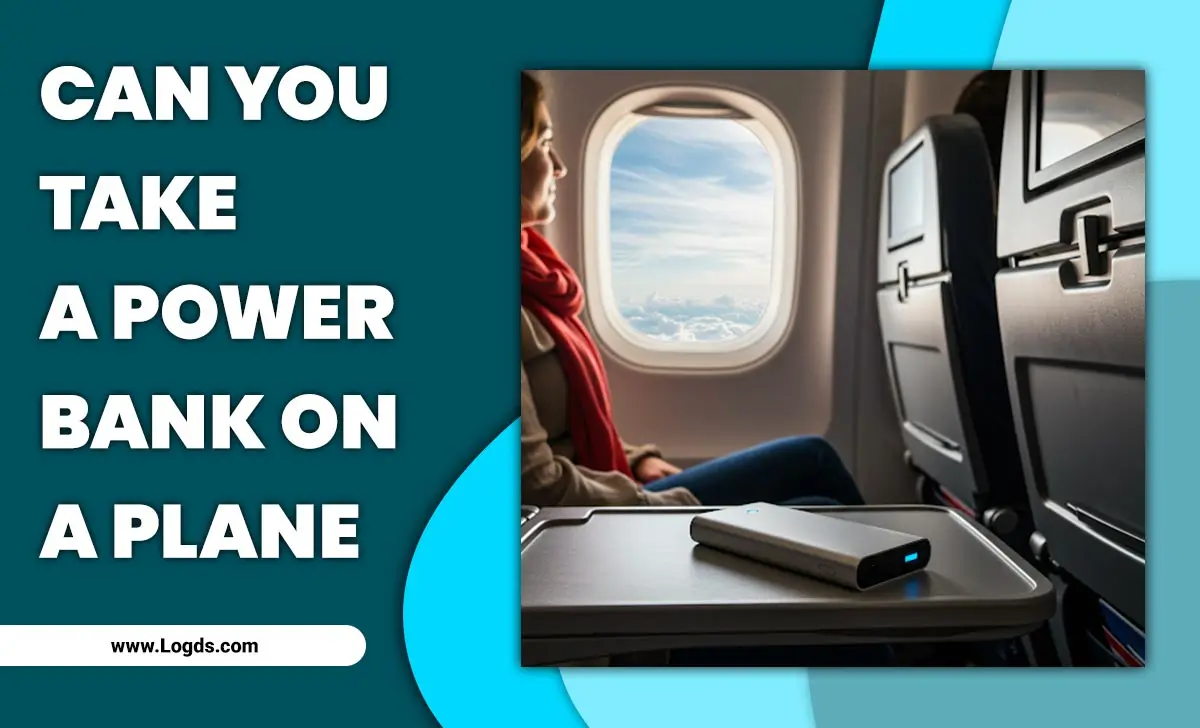In today’s world, electronic devices have become integral to every traveler’s life. Whether it’s a smartphone, laptop, or tablet, we rely on these gadgets to stay connected with friends and family and work while on the go.
However, one of the most common problems travelers face while flying is running out of battery on their devices. Can you take a power bank on a plane? These portable charging devices can keep your electronic devices powered up for hours.
Power banks have become a popular accessory for travelers globally, but many are unsure whether they can carry them on a flight due to airport security regulations. Knowing the rules surrounding their usage while flying is essential if you’re one of those travelers who frequently use power banks. We’ll explore whether you can take a power bank on a plane and offer essential tips to ensure you don’t run into any issues.

Can You Take A Power Bank On A Plane In Your Carry-On Bag?
Can you take a power bank on a plane? You can take a power bank on a plane in your carry-on bag. However, there are certain restrictions and guidelines that you need to follow. The Federal Aviation Administration (FAA) allows power banks with a capacity of 100 watt-hours or less to be taken on board.
Power banks with a capacity between 100 and 160 watt-hours may be allowed with the airline’s approval. It is important to check the specific regulations of the airline you are flying with, as some may have additional restrictions or requirements.
When packing your power bank, it is recommended to place it in your carry-on bag and ensure that it is turned off or set to airplane mode. It is also advisable to keep the power bank easily accessible for security screening. Following these guidelines, you can safely bring your power bank on board and keep your devices charged during your flight.
The Role Of FAA And TSA In Aviation Safety
The Federal Aviation Administration (FAA) determines and enforces the regulations on what passengers can and cannot bring on a plane, including power banks. The Transportation Security Administration (TSA) enforces these regulations and conducts security screenings at airports.
You can carry power banks with 100-watt-hours or less capacity in your carry-on luggage, but you cannot carry them in your checked bags. However, if your power bank has a capacity over 100 watt-hours, you will need approval from the airline before bringing it on board. Researching FAA and TSA regulations before traveling with electronic devices, such as power banks, is important.
Decoding Power Bank Specifications Mah And Wh
Power banks are commonly specified in milliamp hours (mAh) and watt-hours (Wh). mAh measures the capacity of a power bank, while Wh indicates its total energy capacity. You can determine a power bank’s charging capacity and duration by understanding these specifications.
Checking the mAh and Wh ratings ensures compatibility with your devices’ charging requirements. When choosing a power bank, considering both mAh and Wh will help you decide on the charging capabilities you need.
Why Is There A Restriction On The Size Of Power Banks?
The restriction on the size of power banks when traveling on a plane is primarily due to safety concerns. Power banks contain lithium-ion batteries, which have the potential to overheat and catch fire if not handled properly. Airlines aim to reduce the risk of fires caused by power banks on planes by limiting the size of power banks that passengers can carry.
Additionally, larger power banks may have a higher energy capacity, which could pose a greater risk if they malfunction or ignite. Passengers must adhere to these restrictions and carry power banks in their carry-on baggage rather than checked luggage, as this allows for better monitoring and response in case of any issues.
The Risks Associated With Larger Power Banks
Larger power banks carry a higher risk of accidental activation or overheating, increasing the potential for thermal runaway or battery failure. These power banks can produce more intense flames and heat in a fire, making them harder to control.
Moreover, carrying oversized power banks also poses the risk of non-compliance with airline regulations, which could result in the confiscation or denied boarding. To mitigate these risks, it is crucial to understand and adhere to the size restrictions airlines impose.
Can You Carry Multiple Power Banks On A Plane?
When carrying power banks on a plane, the rules can vary depending on the airline and destination. Most airlines generally allow passengers to bring one or two small power banks in their carry-on luggage. However, it is important to check with your specific airline for their policies on power banks.
Some airlines may restrict the capacity of the power bank, or they may require you to carry them in your carry-on baggage instead of checked luggage.
Additionally, it is always a good idea to double-check the regulations of your destination country, as they may have different rules regarding power banks. If traveling internationally, you may need to bring a travel adapter to ensure you can charge your power bank at your destination.
How To Pack Your Power Bank For Air Travel?
When traveling by plane, knowing the regulations regarding power banks is important. While packing power banks for air travel, you should follow some guidelines, even though airlines generally allow them on planes.
By following these guidelines, you can ensure that you pack your power bank safely and comply with airline regulations while traveling by plane. Here are some tips on how to pack your power bank:
- Check The Capacity: Most airlines have restrictions on power banks’ capacity to be brought on board. Make sure your power bank falls within the allowed range.
- Keep It In Your Carry-On: Power banks should always be packed in your carry-on luggage, not checked baggage. Lithium-ion batteries commonly used in power banks can pose a fire hazard if damaged.
- Protect The Terminals: To prevent accidental activation and short circuits, cover the terminals of your power bank with electrical tape or place them in a protective case.
- Declare If Necessary: Some airlines require passengers to declare their power banks at security checkpoints. Be aware of any specific rules or procedures that may apply to your airline.
Are International Flight Rules Different For Power Banks?
When traveling with a power bank, you must familiarize yourself with the rules and regulations of the airline and country you will be flying with. While there are general guidelines that apply to most airlines, international flight rules may differ when it comes to power banks.
Some countries may prohibit power banks altogether, while others may restrict their size and capacity for on-board usage. To ensure a smooth travel experience, it is recommended to check with your airline. Or consult their website for the most up-to-date information regarding power bank regulations for international flights.
How Do Airlines Handle Power Banks That Exceed The Limit?
When traveling with power banks, being aware of airline regulations is important. Most airlines impose specific limits on the capacity of power banks that passengers can carry on board. If the power bank exceeds these limits, the plane may not allow it.
In such cases, airlines typically require passengers to either check in the power bank or remove it from their luggage before boarding. You should check with your airline beforehand to understand their policies regarding power banks and ensure a smooth travel experience. Safety is always a top priority for airlines, so it’s important to comply with their regulations to ensure a hassle-free journey.
Conclusion
Understanding the rules and regulations regarding power banks when traveling by plane is important. The FAA and TSA play a crucial role in ensuring aviation safety, and their restrictions on power banks are in place to mitigate any potential risks.
It is essential to be aware of the specifications of your power bank, such as its mAh and Wh capacity, as well as the size limitations imposed by airlines. Packing your power bank safely and securely is crucial to comply with air travel regulations. Remember to check the specific rules for international flights, which may differ from domestic ones. You can confidently travel with your power bank and stay connected.
Frequently Asked Questions
[rank_math_rich_snippet id=”s-175ddde9-2967-4d25-aca2-ed932a04be8b”]






